CLAS241 - Early Bronze Age (3000 - 2000 BCE)
1/7
There's no tags or description
Looks like no tags are added yet.
Name | Mastery | Learn | Test | Matching | Spaced |
|---|
No study sessions yet.
8 Terms
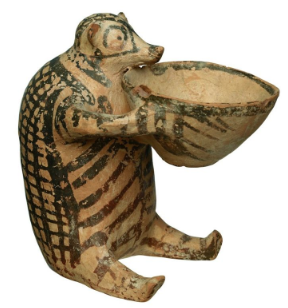
Terracotta hedgehog. Early Bronze Age. 3000 - 2000 BCE.
Humour
Naturalism
Good representational art (back grid = spikes, lines = fingers)
Representational art is a strength of the Cyclades
Many terracotta figurines represented Mother Goddess, the giver of life to humans, showing religious beliefs were rooted in birth and death.
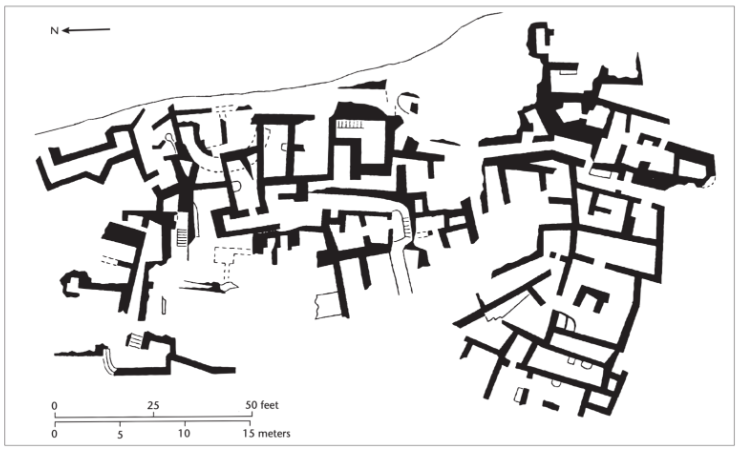
Plan of Myrtos. Early Bronze Age. 3000 - 2000 BCE.
Like a little city
Farmers and artisans lived in the village of myrtos
Inhabitants grew plants (ex. barley, wheat, olives, vines), reared domesticated animals, and made pots/figurines
Rooms devoted to living, religion, cooking, storage - surrounding an open courtyard in the middle
Storage area had rooms of pithoi (large clay containers)
Defensible communal living space
Architectural similarities with Minoans
Myrtos was a proto-urban Minoan society
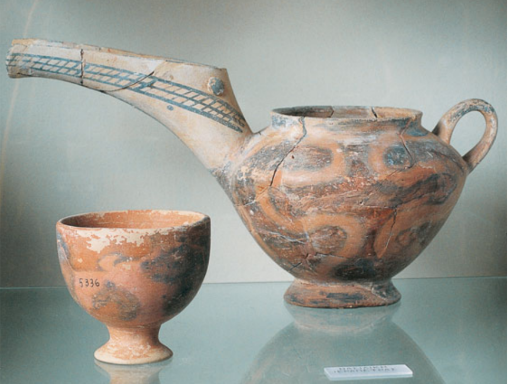
Vasilike ware cup. Early Bronze Age. 3000 - 2000 BCE.
Long spout
Spout has a decorative eye, represents a bird as a whole
Used burnt end of stick to paint decoration
Dark floating forms arranged symmetrically on jug
Influenced by Trojan material
Greece traded with Troy and adopted forms of the Beak Spouted Jug
Made of coiled clay
Held liquids
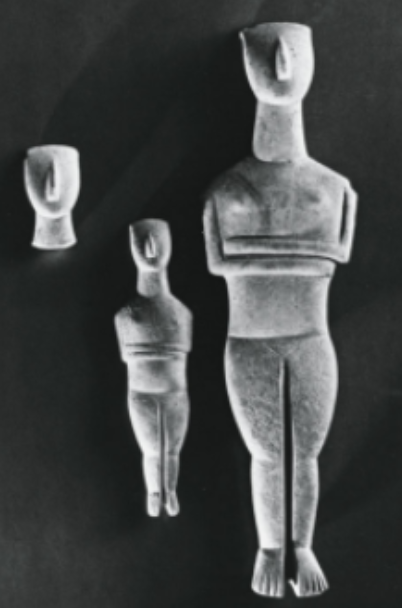
Cycladic figurine. Early Bronze Age. 3000 - 2000 BCE.
Interpreted as a Fertility symbol because of emphasis on areas that swell during pregnancy and arms folded over stomach
Geometric form due to series of triangles (head, body) and rectangles (neck, legs) *
First life-size human sculptures (before that, we got smaller scultures)
Used in burial contexts due to pointed down feet that suggests it’s supposed to lie down
Anthropomorphic (represents human body), which becomes more prevalent in Greek culture
Made of marble, which is why body parts don’t stick out
Cycladic islands have a lot of marble (people use material around them)
More detail added later on in paint
Most figurines are female
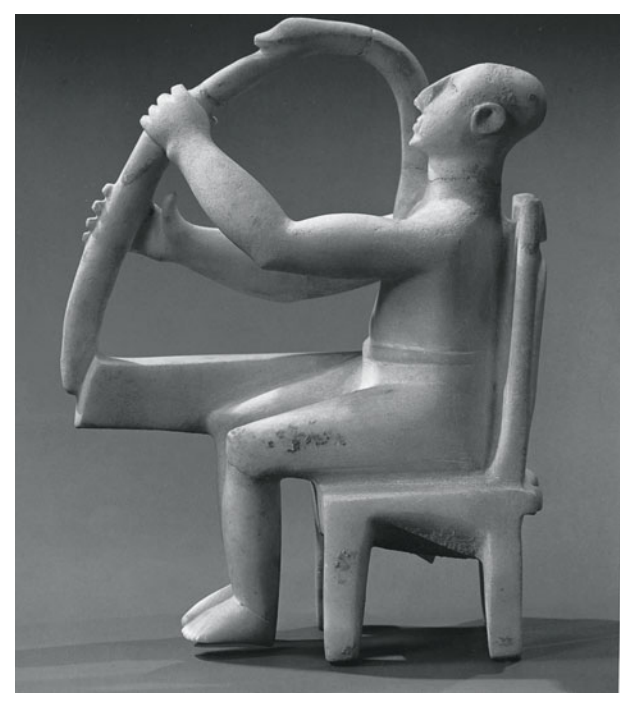
Cycladic figurine. Early Bronze Age. 3000 - 2000 BCE.
Interpreted as a Fertility symbol because of emphasis on areas that swell during pregnancy and arms folded over stomach
Geometric form due to series of triangles (head, body) and rectangles (neck, legs) *
First life-size human sculptures (before that, we got smaller scultures)
Used in burial contexts due to pointed down feet that suggests it’s supposed to lie down
Anthropomorphic (represents human body), which becomes more prevalent in Greek culture
Made of marble, which is why body parts don’t stick out
Cycladic islands have a lot of marble (people use material around them)
More detail added later on in paint
Most figurines are female
Musician figure (seated harpist)
Most shocking exploration of marble
Shows artistic freedom and virtuosity
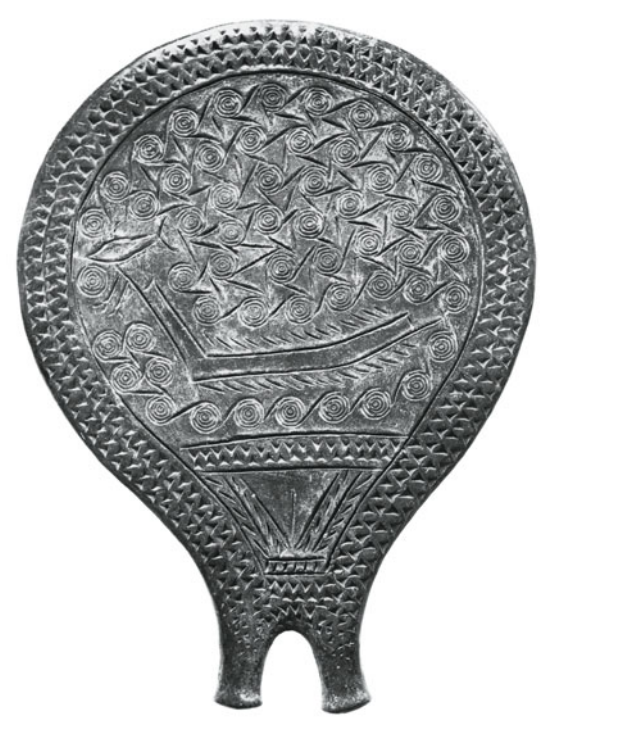
Cycladic “Frying Pan”. Early Bronze Age. 3000-2000 BCE.
Storage device? Mirror? Fertility symbol?
Mixed perspective
Swirls (waves) viewed top-down
Boat viewed from side profile
Egyptian boat, shows similar technology
Eyes on top of boat
Possibly represents animal
Fertility symbol
Pan is the female body, two legs with vagina and hair (hair may be wheat - used in fertility)
Overall, shows interest in nature and the world around them
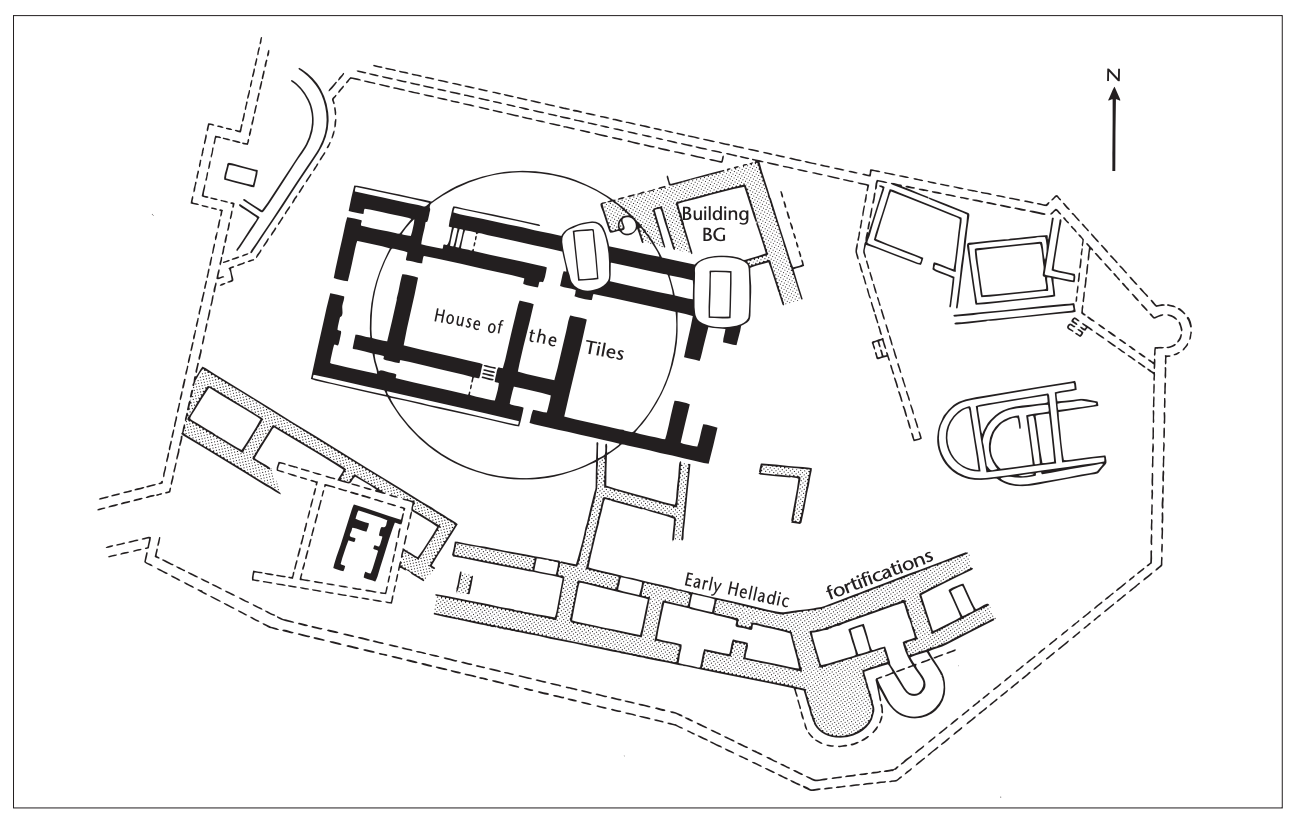
House of Tiles - Lerna. Early Bronze Age. 2900 -2400 BCE (3000–2000 BCE).
Two big buildings successively occupied the same spot
Former: Building BG
Successor: House of tiles
Both buildings had similar construction techniques
Same tile roofs
Same shape of rooms and corridors
Similar proportions
Building BG:
Associated with many surrounding houses with gravel streets with little sense of planning
Dense town was protecting by fortifications provided by towers
House of Tiles:
Corridor type house
Basically a proto-megaron (with roof tiles):
A rectangular building with two rooms and an entrance and porch on the short side
Entrances on all four sides gave access to symmetrical rooms and corridors
Staircases at north and south led to an upper story
The house was destroyed (2200BC)
Palace? Chief’s house? Communal storage?
Might be centers of government, markers of social and political power, like a Chief’s house
Could be a Palace
Could be more practical and for communal storage/warehouses
Next house with tiles doesn’t appear for a long time
Clay bricks in house of tiles survived
Several examples at this time (Lerna III 2600-2400 BCE)
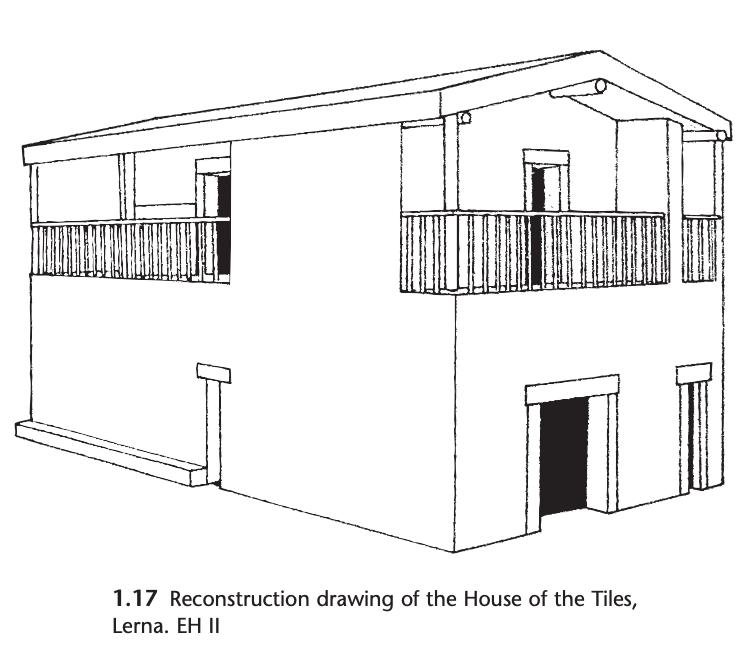
House of Tiles - Lerna. Early Bronze Age. 2900 -2400 BCE (3000–2000 BCE).
Two big buildings successively occupied the same spot
Former: Building BG
Successor: House of tiles
Both buildings had similar construction techniques
Same tile roofs
Same shape of rooms and corridors
Similar proportions
Building BG:
Associated with many surrounding houses with gravel streets with little sense of planning
Dense town was protecting by fortifications provided by towers
House of Tiles:
Corridor type house
Almost rectangularSeveral examples at this time (Lerna III 2600-2400 BCE)
Entrances on all four sides gave access to symmetrical rooms and corridors
Staircases at north and south led to an upper story
The house was destroyed (2200BC)
Palace? Chief’s house? Communal storage?
Might be centers of government, markers of social and political power, like a Chief’s house
Could be a Palace
Could be more practical and for communal storage/warehouses
Clay bricks in house of tiles survived
Next house with tiles doesn’t appear for a long time